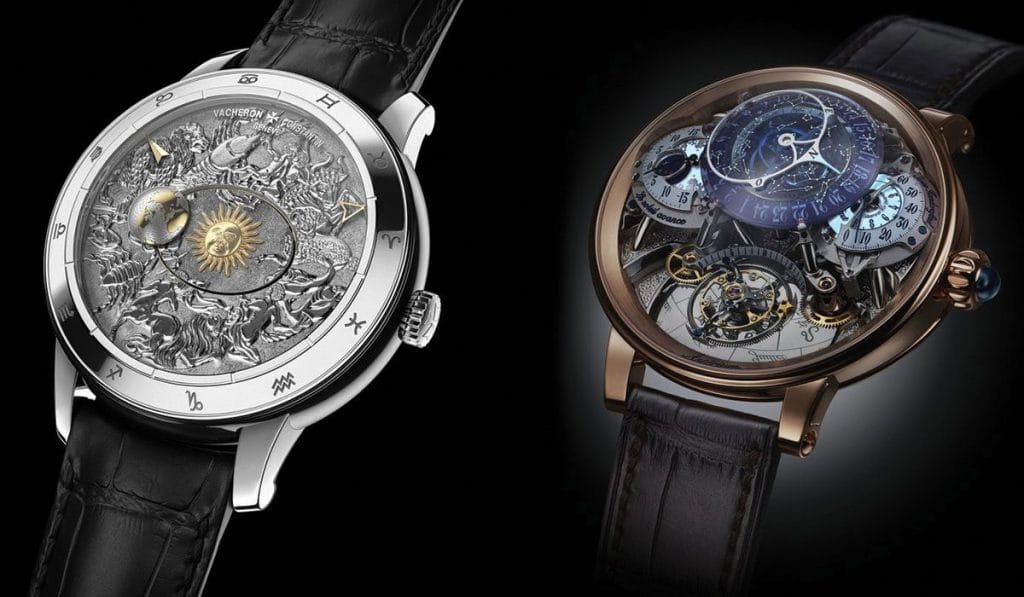Pop quiz: How many days are there in a year? If you answered 365 (and 366 for leap years), you’d be close, but not entirely right. Astronomers have far more precise ways of defining this time period: The tropical year – the time it takes for the Sun, as viewed from the Earth, to return to the same position along its celestial path – has 365.2421898 days. Such variations explain the existence of the leap year in the Gregorian calendar – every four years, that extra day at the end of February evens things out.
Celestial Sphere
But the latest astronomy watches are not standing for this easy way out, offering instead the ability to accurately track time on a cosmic scale. A trio of timepieces with elaborate central displays, Vacheron Constantin’s Copernicus Celestial Spheres each features a mini sculpted Earth that completes one rotation every 24 hours and one elliptical revolution around the “sun†every 365.2421898 days. Dedicated to the 16th-century mathematician and philosopher Nicolaus Copernicus, the three watches are technically alike, powered by the new automatic Calibre 2460 RT.
However, each of them showcases different artistic techniques to impressive effect: grand feu enamelling; engraving; and a combination of hand- and laser-engraving on sapphire crystal. The third model is exceptionally noteworthy for its interesting techniques: A hand-painted midnight-blue underdial is overlaid with a transparent sapphire crystal, which is engraved on the back with zodiac symbols – first by laser, then by hand to give the raised motifs further depth. Out of this world.
Star Turn
The calendar functions of the feature-packed Bovet Recital 20 Asterium are based on the sidereal year – the 365.25 days it takes the earth to orbit the sun – and are indicated on an elaborately etched display on its caseback. Its dial pays homage to the cosmos with a laser-engraved blue quartz dome that indicates the actual position of the constellations in the sky above the wearer.



